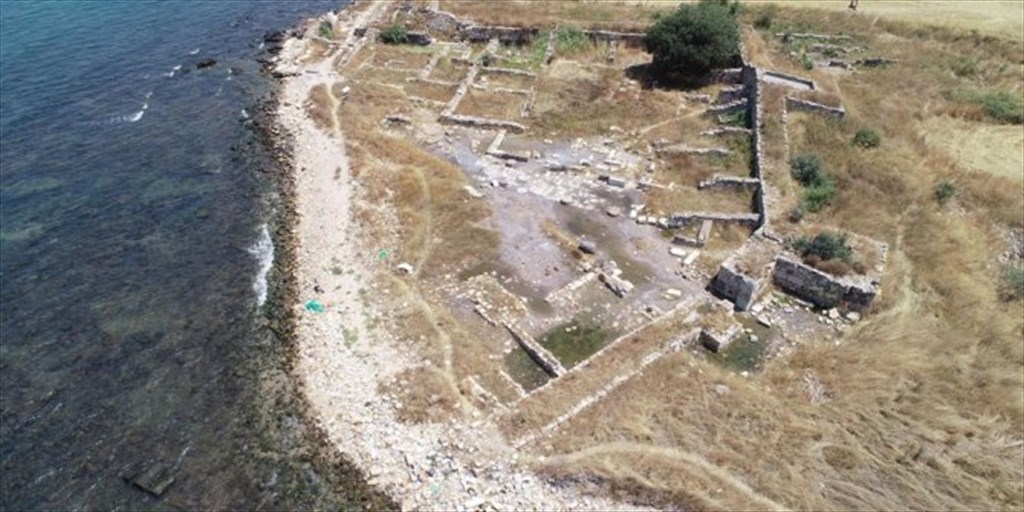Kyme Antique City
It is the most important settlement center of the coastal region called Aiolis. Kyme City, the largest of the 12 Aiol Cities, is located near Aliağa Çakmaklı Village. Kyme, located in the Nemrut Bay, was founded by the tribe from 'Fricio Locrico' according to Strabon; Although the exact date of foundation of the city is not known, the reference to 'Pelasgiler' brings to mind the first centers to be established on the Anatolian shores and is dated to 1046 BC based on the same foundation date as Myrina. Preserving its importance since the Archaic Period due to its port, Kyme, besides being a port city, was one of the first cities to print money. It is noteworthy that in the first coins printed, there is a horse head figure on the square placed inside the outer circle. Kyme had an important place within the framework of the political situation of Aegean cities in the Classical Period; He was appointed as the president of the cities that make up the Aegean Union. It is understood from the coins minted in that period and from an amphora handle on which the emblem of the city was printed, that it continued its commercial importance in the 4th century BC. It is understood from the archaeological remains and ancient sources that the city continued to preserve its importance in the Roman Period, especially in the early periods of the Empire.
The history
Although there is no extensive information about the Byzantine and Middle Ages, the small amount of remains found and the information that a cardinal is the residence of a cardinal suggests that it had a certain importance in this period as well. The first investigations in the region were started by Reinach, who was doing excavations near Myrina at the end of the 19th century and also drilled trial pits in Kyme; A necropolis and a few stone statues from the Archaic Period were found during the excavations. The first real archaeological excavation was conducted under the direction of A. Salaç from Prague University and temples, porticos and houses were found during the excavations. The ruins of Kyme were plundered like the ruins of other cities; stones were used by local residents in the construction of new buildings. For this reason, very few remains have survived from the famous city of Kyme. The Agora and its surrounding structures were unearthed in the works carried out by the Izmir Archeology Museum since 1980, and a room with a beautiful mosaic covered floor was found near the remaining part of the city walls. Only the coastline was considered in the joint study carried out by Izmir Archeology Museum and Catania University between 1982-1985. In the middle of the coastal strip, researches were carried out on the outer part of the place that is restricted at a height, in the form of a horseshoe, in the same direction as the starting point of the great breakwater, where there are important harbor structures that can be seen although most of them are buried in the sea or in water; The most important find uncovered during excavations is the large medieval structure found under a horseshoe-shaped hill; It is understood that the building was built as a fortress in the 12th century BC to protect the area in the middle of the harbor. In 1988, during the studies conducted under the direction of Prof. Dr. Sebastiana LAGONA from Catania University, important remains belonging to the Roman and Byzantine Periods, especially Archaic and Hellenistic, were found in Kyme. Archaic Period settlement structures were encountered for the first time. During the studies carried out in Kyme City, many findings such as numerous findings such as the Roman era agora, theater, hot water spa bath, merchant house with cistern, aqueduct, colonnaded road and castle walls, waste water, septic tank and sewer system, numerous amphora remains and harbor ruins entering 150 meters into the sea were unearthed. Studies in Kyme City have been carried out since 2008 by a team headed by Prof. Dr. Antonio La Marca from the University of Calabria, Italy.

.jpg)
.jpg)
.jpg)
.jpg)
.jpg)
.jpg)
.jpg)
.jpg)
.jpg)
.jpg)
.jpg)
.jpg)
.jpg)
.jpg)
.jpg)
.jpg)
.jpg)
.jpg)


Comments
No comment left, would you like to comment?